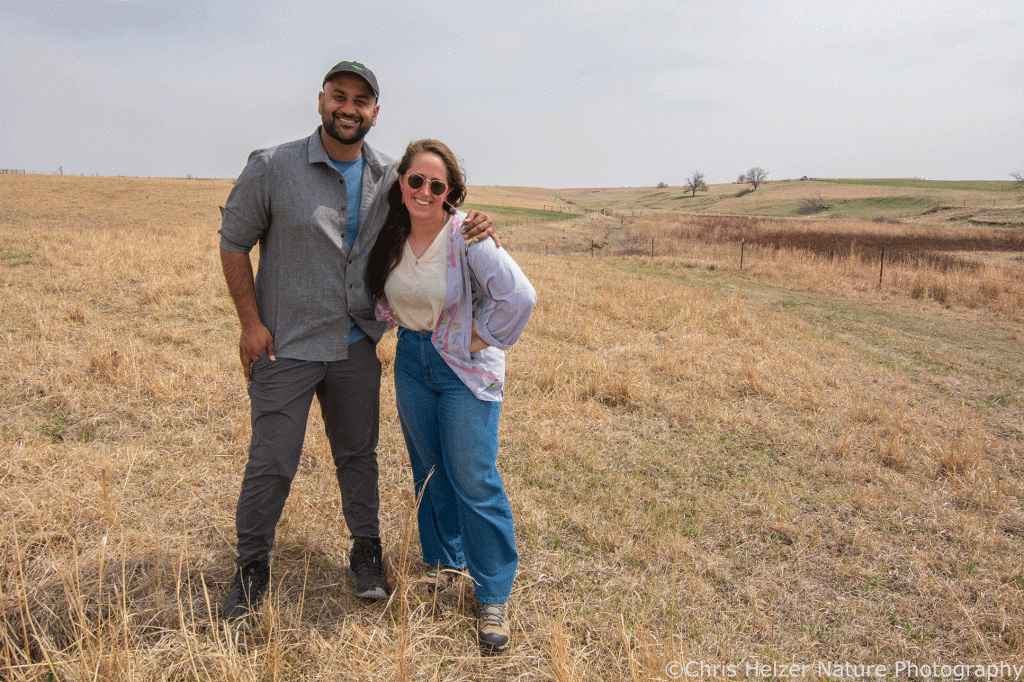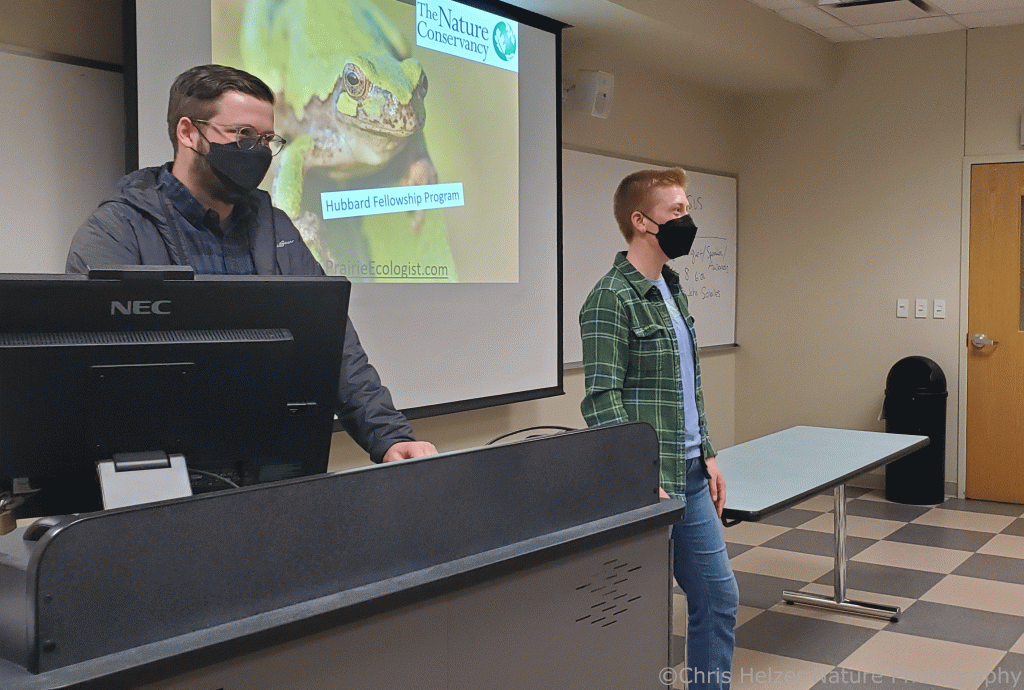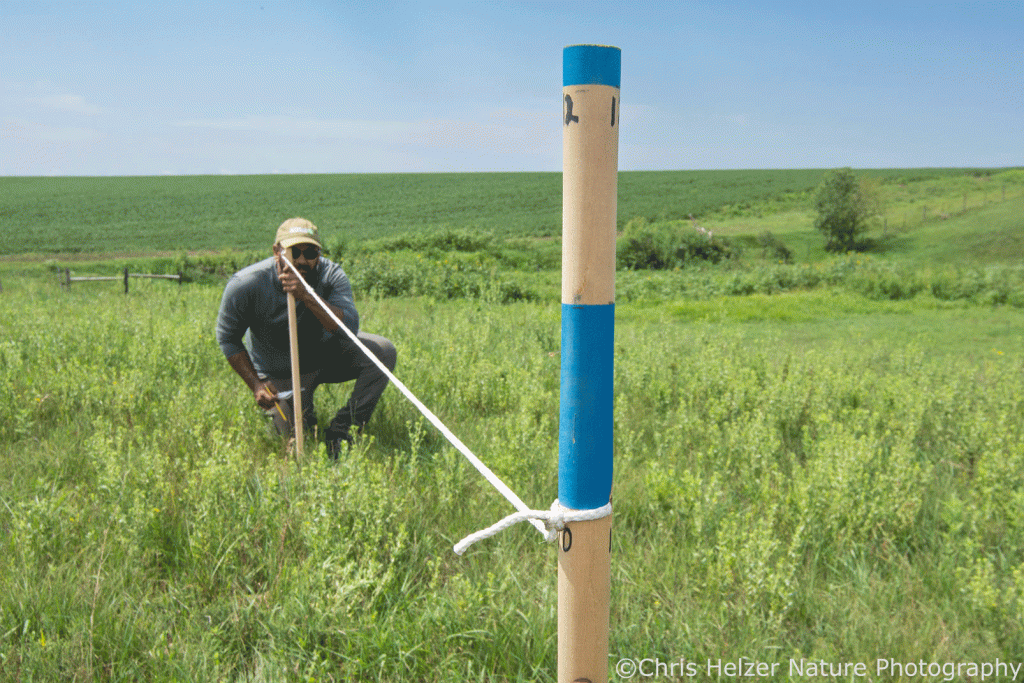One of the great joys of nature exploration is the recognition and celebration of recurring events. Through repeated visits to a site, or observations of a particular ecosystem, I get better at perceiving patterns tied to the time of year. I learn when to expect plants to bloom, birds to sing, and insects to molt into adulthood. Maybe best of all is tuning in to annual migrations of birds, butterflies, moths, dragonflies, and other creatures.

Once I pick up on a pattern, finding deviations from it leads to intrigue. “I wonder why I haven’t seen any grasshopper sparrows yet this spring?” “Why is heath aster blooming in May??” There’s a mystery to be solved. Deductions to be made.
On the flip side, while exceptions to a rule can be stimulating, I also find tremendous comfort in predictability. The world feels right when I hear the first sandhill crane calls in late February, or chorus frogs in March. One of my favorite indications of autumn is the annual appearance of migratory variegated meadowhawk dragonflies. (All the photos in this post are of that species, photographed this morning.)

This variegated meadowhawk is often the first dragonfly species I see each spring and the last I see each fall. I assume most of those I see early and late are migrating through, though I’ve read that there may be resident populations as well. When I see lots of them at once, though, especially this time of year, I think it’s a good bet they’re moving southward.
This morning, I went out to check on our family prairie and arrived before sunrise. After confirming that cattle had been pulled out for the year (an early departure because of the drought) I grabbed my camera out of the bag. I parked on the south side of the prairie and climbed through the barbed wire fence just as the sun broke the horizon.

The heavy dew made the prairie sparkle as the light hit it, and as I looked toward the rising sun, I could see the extra-brightly-glittering wings of perched dragonflies. I haven’t spent enough time to become proficient in dragonfly identification, but variegated meadowhawks and I are old friends now, so I recognized them immediately.
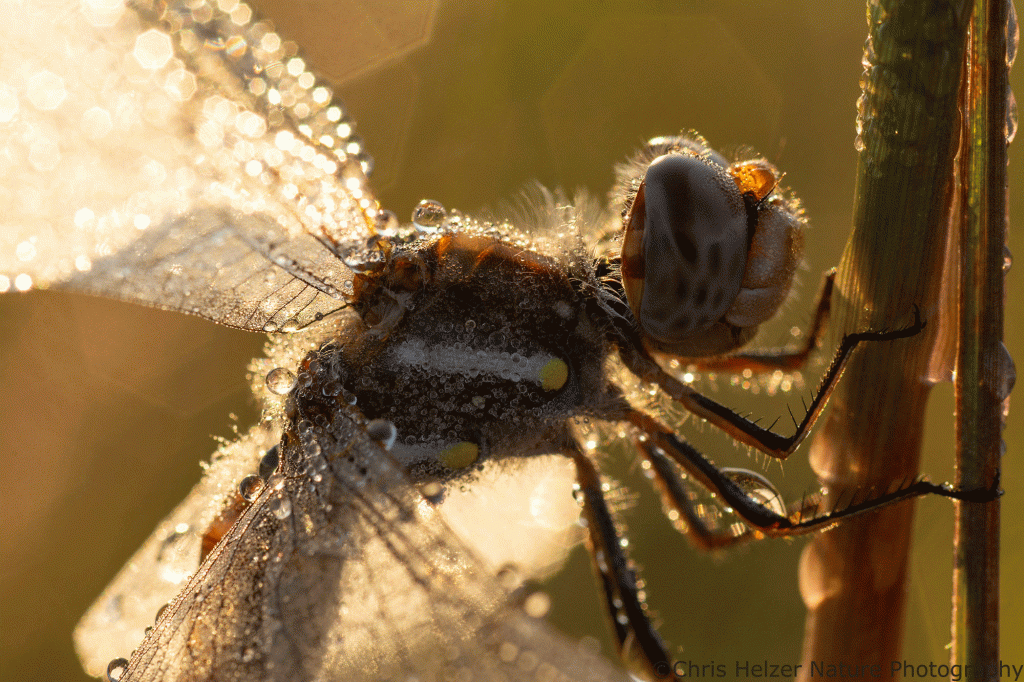
Over the next 50 minutes, I covered less than an acre of prairie with my camera. Every time I’d raise my head to scan for my next photo subject, I’d see another dragonfly. I did photograph other subjects, including sideoats grama flowers, a parasitic fly, and a robber fly. Those just happened to be next to dragonflies, though, and were brief diversions from what was obviously the theme of the morning.
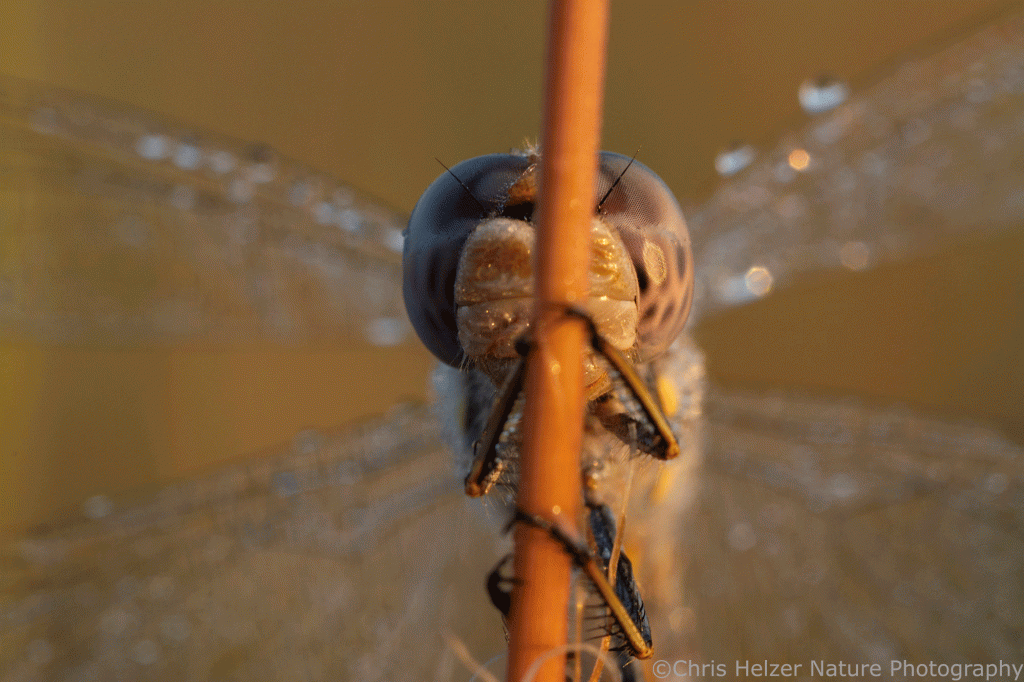
I must have seen at least 20 dewy dragonflies in that acre or so of prairie. I think I ended up photographing only seven of them, and that’s just a guess based on looking through the photos later. If you’re bored, you can try to pick out all seven individuals from the images in this post. (Most of them are pictured multiple times.)


Now that I’ve seen a coruscation of dew-covered meadowhawks, it feels like autumn. Sure, I’ve noted the departure of most of breeding prairie birds. The golden hue of grasses and blooming of late-season flowers are obvious, too. It’s those dragonflies, though, that always drive home the beginning of autumn for me. It feels good to see them, even though I know it means the growing season will be crashing to its end very soon.
(Also, I know that ‘coruscation’ isn’t a recognized term for a bunch of dragonflies but I really like it – especially when those dragonflies are all covered in dew. I poked around online to see if there was another word I should use and didn’t find any consensus. Since I’m not aware that anyone has a particular right to decide these things, I’m going my own way. Feel free to propose your own terminology. Then, start your own blog and you can use the words you like.)

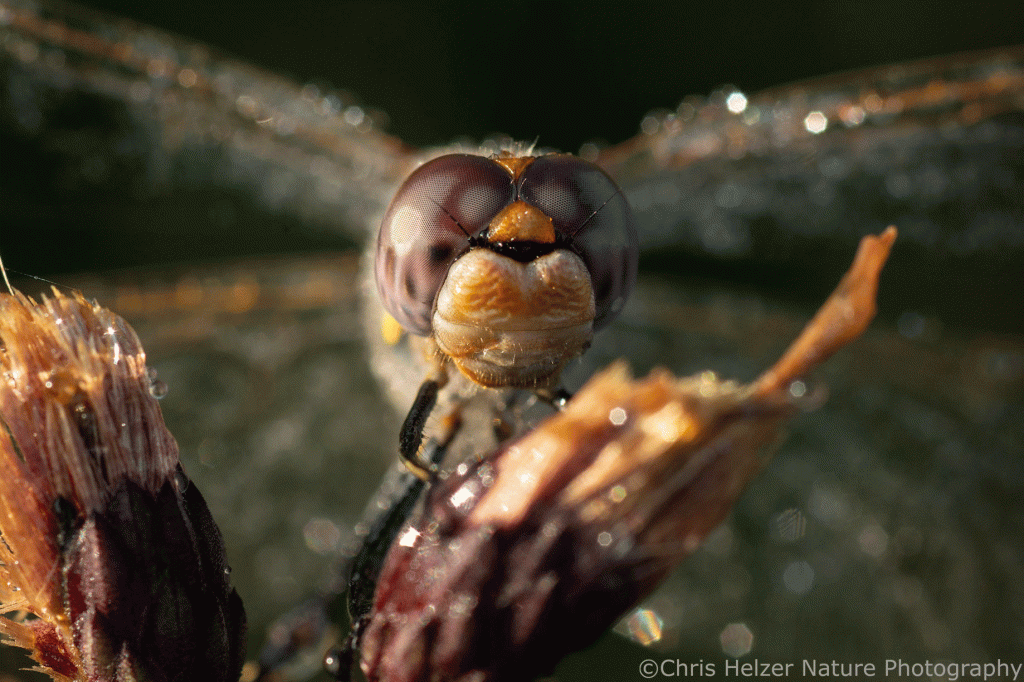
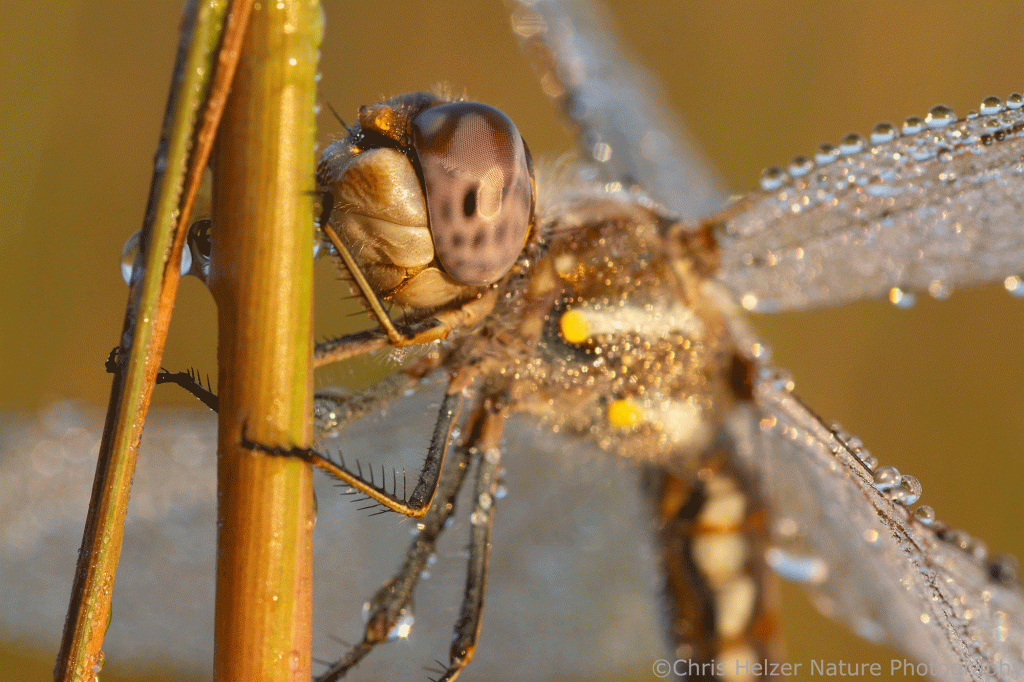
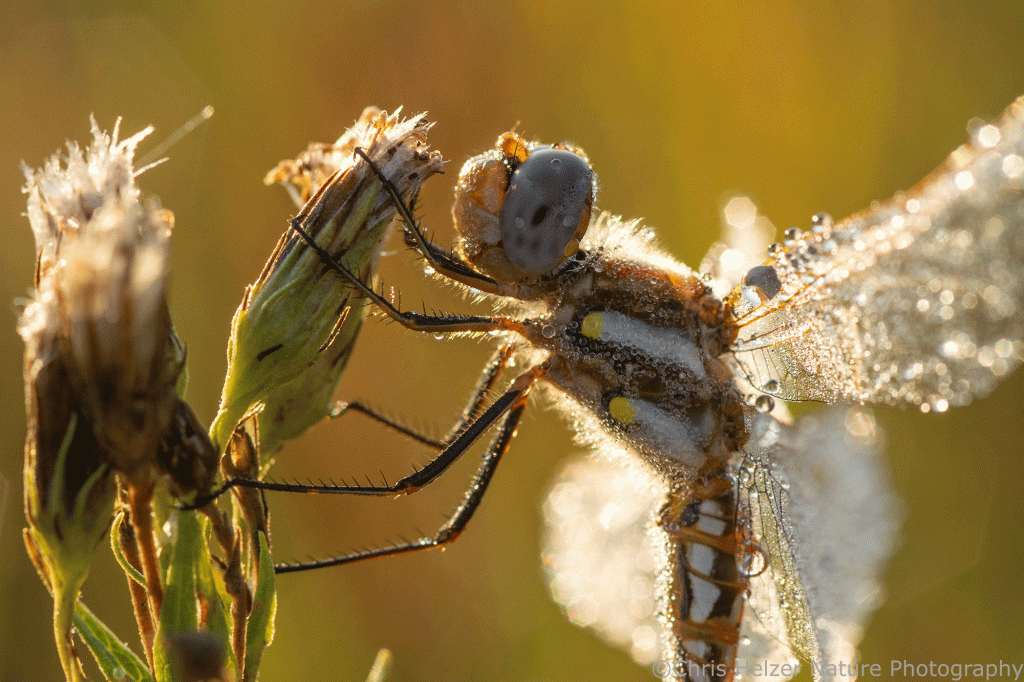
As I photographed the dragonflies this morning, I continued my recent contemplation about overnight roost site choices of insects. In this case, I didn’t see any obvious pattern to their location. Some were perched close to the ground and others were near the tops of plants. The first dragonflies I found were on the east side of a little hill, where they got sunlight early. Later, though, I came across a bunch on the shady side of that same hill. Maybe there isn’t any rhyme or reason to where they spend the night.
But there should be, right?


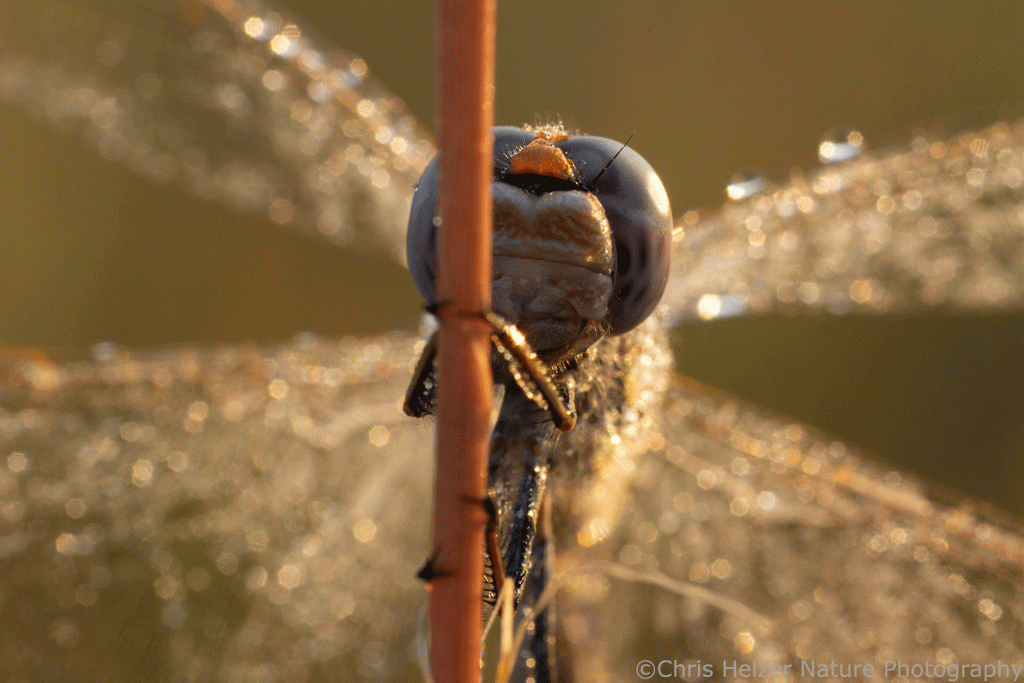
Eventually, the sun got brighter and other work was calling so I climbed back through the fence and headed home, secure in the knowledge that a new season has arrived. I know the calendar doesn’t say it’s autumn yet, but the dragonflies have spoken. Happy autumn, everyone!


